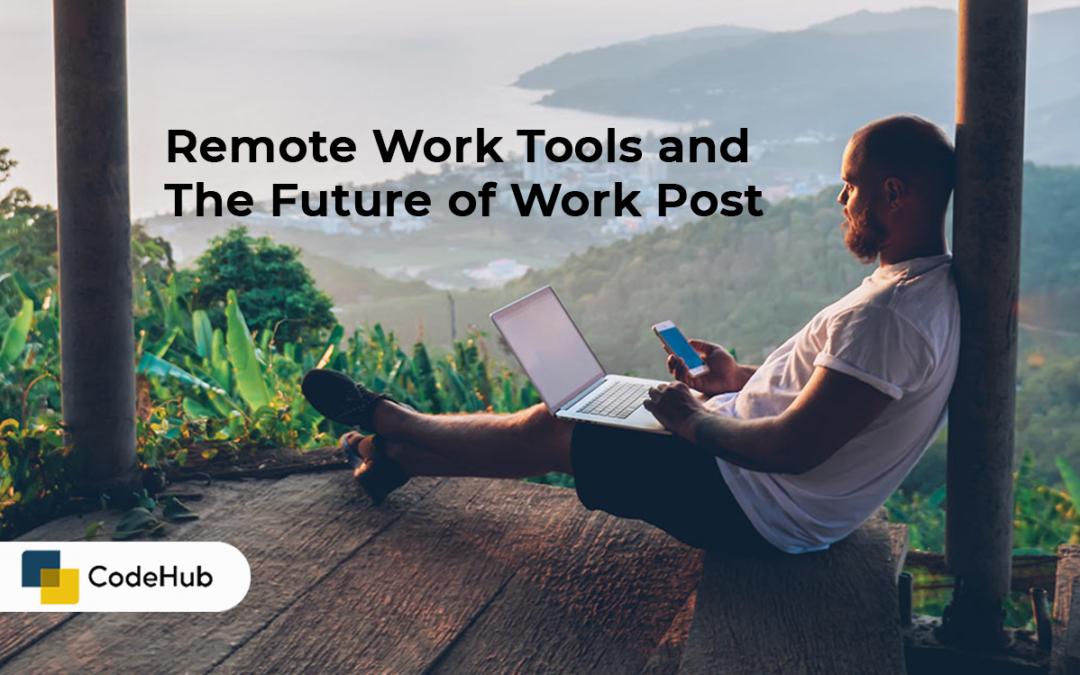The COVID-19 pandemic has changed the way we work, live, and communicate. Millions of people around the world have shifted to remote work, either by choice or by necessity, and have adapted to new challenges and opportunities. Remote work is not a temporary phenomenon, but a lasting trend that will shape the future of work post-pandemic. In this blog, we will explore some of the remote work tools that are enabling and enhancing remote work, and some of the implications and predictions for the future of work.
Remote work tools
Remote work tools are software or hardware solutions that facilitate and improve remote work processes, tasks, and functions. Remote work tools can be categorized into different types, such as:
- Communication tools: These are tools that enable remote workers to communicate and collaborate with their colleagues, managers, clients, and stakeholders, through various channels, such as voice, video, text, or email. Examples of communication tools are Zoom, Slack, Microsoft Teams, and Gmail.
- Productivity tools: These are tools that help remote workers manage their time, tasks, projects, and workflows, and optimize their efficiency, quality, and performance. Examples of productivity tools are Asana, Trello, Google Workspace, and Evernote.
- Security tools: These are tools that protect remote workers and their data from cyberattacks, breaches, or leaks, and ensure the privacy, integrity, and availability of their information. Examples of security tools are VPN, antivirus, firewall, and encryption software.
- Learning tools: These are tools that enable remote workers to acquire new skills, knowledge, or competencies, and enhance their professional development and career growth. Examples of learning tools are Coursera, Udemy, LinkedIn Learning, and Khan Academy.
- Wellness tools: These are tools that support remote workers’ physical, mental, and emotional well-being, and promote their health, happiness, and balance. Examples of wellness tools are Headspace, Calm, Fitbit, and Peloton.
These are just some of the remote work tools that are available and popular among remote workers. There are many more tools that cater to specific needs, preferences, or industries of remote workers, and new tools are constantly being developed and improved.
The future of work
Remote work tools are not only enabling and enhancing remote work, but also influencing and transforming the future of work. Remote work tools have several implications and predictions for the future of work, such as:
- Hybrid work models: Remote work tools make it possible and convenient for workers to work from anywhere, anytime, and on any device. This means that workers can choose the best work environment for them, whether it is at home, in the office, or somewhere else. This also means that employers can offer more flexibility and autonomy to their workers, and attract and retain talent from a wider and diverse pool. Therefore, hybrid work models, which combine both remote and in-office work, are likely to become more common and preferred in the future of work.
- Digital transformation: Remote work tools accelerate and facilitate the digital transformation of work processes, tasks, and functions. This means that work activities that can be performed or automated by digital technologies, such as software, artificial intelligence, or robotics, will increase, while work activities that require human skills, such as creativity, empathy, or problem-solving, will become more valuable. Therefore, digital transformation will create new opportunities and challenges for workers and employers, and require them to adapt and innovate in the future of work.
- Employee experience: Remote work tools enhance and improve the employee experience of remote workers, by providing them with the tools and resources they need to succeed and thrive in their work. This means that remote workers can enjoy more benefits and advantages, such as higher productivity, satisfaction, engagement, and loyalty, as well as lower stress, burnout, and turnover. Therefore, employee experience will become a key factor and differentiator for workers and employers, and require them to invest and prioritize in the future of work.

